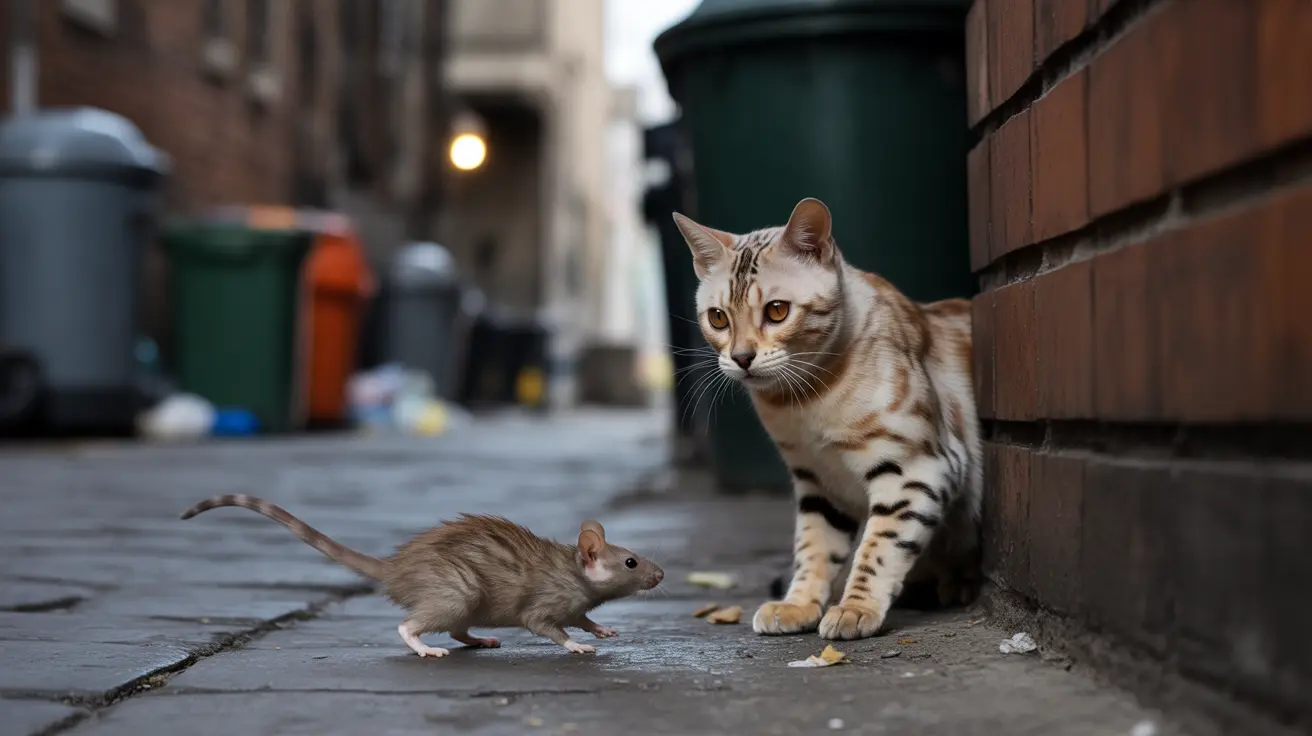The Natural Hunting Instincts of Cats
Cats are equipped with remarkable hunting abilities, from their sharp retractable claws to their keen night vision. These natural-born predators possess an instinctive drive to hunt, regardless of whether they're hungry or well-fed. Even pampered indoor cats display these innate behaviors, pouncing on toys and shadowing moving objects.
However, these hunting instincts don't necessarily translate to effective rat control. While cats excel at catching smaller prey like mice and birds, their relationship with rats is considerably more complex.
Why Cats Often Avoid Hunting Rats
Despite their reputation, most cats show remarkable restraint when it comes to hunting rats. This reluctance stems from several practical considerations:
- Size differential: Adult rats can reach sizes that make them formidable opponents for average house cats
- Risk assessment: Cats instinctively avoid prey that could potentially harm them
- Energy efficiency: The effort required to hunt a rat often outweighs the potential benefit
- Previous experiences: Negative encounters with rats can make cats more cautious
The Scientific Evidence
Recent research has challenged the traditional notion of cats as effective rat controllers. A notable study at a Brooklyn waste management facility found surprisingly low engagement between cats and rats. Over a 79-day period, researchers documented only 20 stalking incidents resulting in just two successful kills, despite the presence of numerous cats and rats.
This research suggests that while cats might influence rat behavior, causing them to become less visible, they rarely engage in actual predation.
Urban Myths vs. Reality
Many cities have implemented "working cat" programs, placing feral cats in areas with rat problems. While some businesses report positive results, the success often relates more to rat deterrence than actual population control. Rats may simply become more cautious and less visible, rather than declining in numbers.
Effective Alternatives to Feline Rat Control
For those dealing with rat infestations, experts recommend a comprehensive approach that includes:
- Professional pest control services
- Proper waste management
- Sealing entry points and access routes
- Environmental modifications
- Mechanical traps and deterrents
Frequently Asked Questions
Can cats effectively kill and control rat populations in urban environments?
While cats can kill rats, research shows they rarely do so effectively enough to control rat populations. Most cats prefer smaller prey and avoid confrontations with adult rats.
Why do most cats prefer hunting mice over larger rats?
Cats instinctively avoid prey that could pose a threat to their safety. Rats are larger, more aggressive, and capable of fighting back, making them a riskier target compared to smaller, more manageable mice.
How do rats change their behavior when cats are present nearby?
Rats typically become more cautious and less visible when cats are present, often changing their movement patterns and staying hidden. However, this behavioral change doesn't necessarily reduce their population.
Are feral cat colonies a reliable method for commercial or urban rat control?
While feral cat colonies might help deter rats from visible areas, they're not consistently effective for population control. Success stories are often more about rat behavior modification than actual population reduction.
What are safer and more effective alternatives to using cats for managing rat infestations?
Professional pest control services, combined with environmental management, proper waste disposal, and structural modifications, provide more reliable results than relying on cats alone.
Conclusion
While cats possess impressive hunting abilities, their effectiveness as rat controllers has been largely overstated. Rather than relying on feline intervention, those facing rat problems should pursue comprehensive pest management strategies that address the root causes of infestations while ensuring both human and animal safety.






